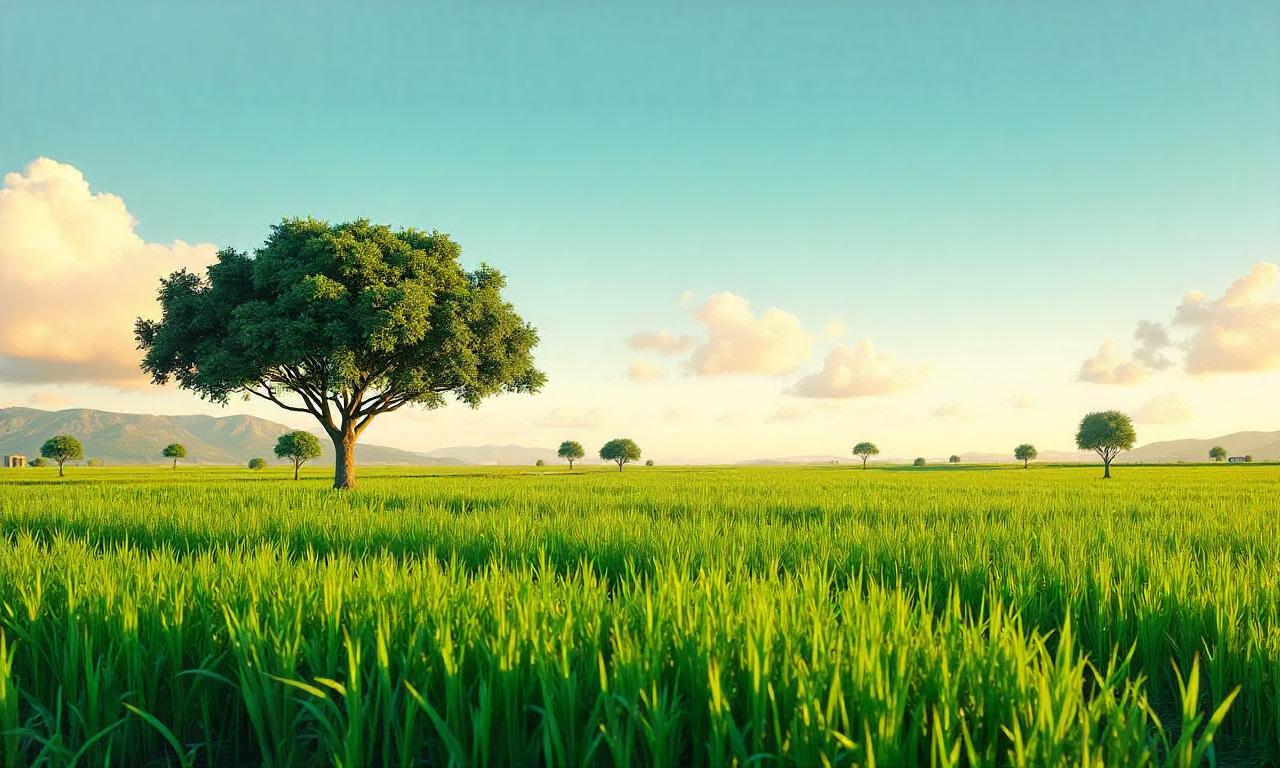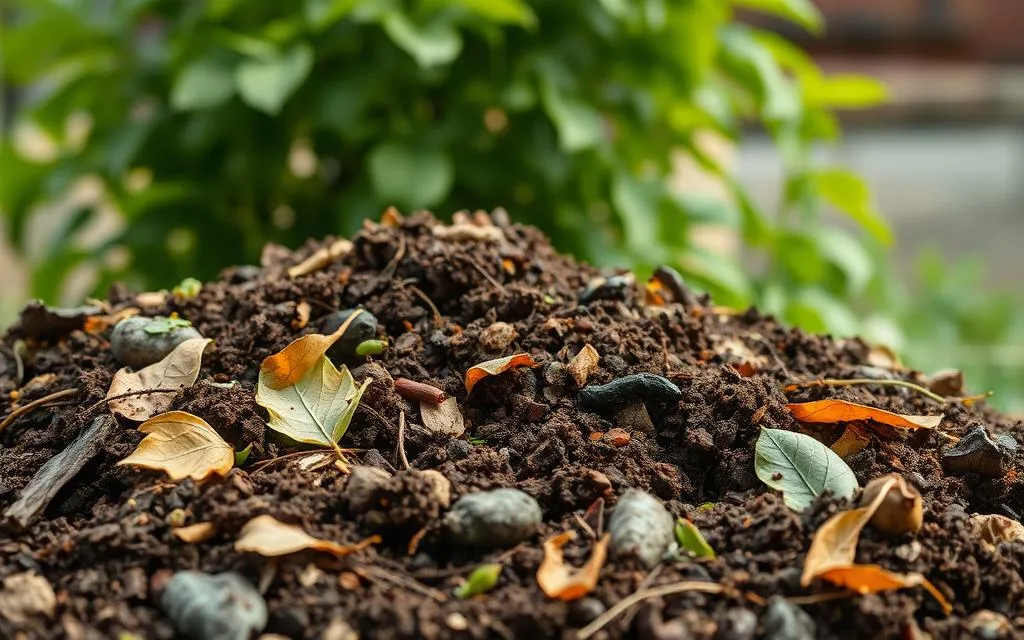How Climate Change Impacts Global Agriculture and Food Security
Climate change is one of the most pressing challenges of the 21st century, and its impact of climate change on agriculture is increasingly evident. As global temperatures rise, weather patterns become more erratic, and natural resources such as water and arable land face unprecedented strain, the agricultural sector is under threat. This article explores the multifaceted ways in which climate change affects food production, from shifting growing seasons to extreme weather events, and examines its implications for global food security. By analyzing key factors like temperature fluctuations, water scarcity, soil degradation, and pest dynamics, we aim to provide a comprehensive understanding of the current and future challenges facing agriculture. The discussion will also highlight adaptive strategies and policy responses that can mitigate these effects, ensuring sustainable food systems for future generations.
Table of Contents
Toggle—
### 1. Rising Temperatures and Crop Yields
The impact of climate change on agriculture is most directly observed in the rise of global temperatures. According to the Intergovernmental Panel on Climate Change (IPCC), average global temperatures have increased by approximately 1.1°C since the pre-industrial era, with projections suggesting a rise of up to 2.5°C by 2050 if current trends continue. This warming trend disrupts traditional growing cycles, alters the suitability of certain crops, and reduces overall agricultural productivity.
#### 1.1. Effects on Major Crops Rising temperatures affect crops in several ways. For instance, wheat, a staple food for over 3 billion people, is highly sensitive to heat stress. Studies show that every 1°C increase in temperature can reduce wheat yields by 6% in some regions, particularly in South Asia and the Middle East. Similarly, maize production in tropical and subtropical areas faces challenges due to prolonged heatwaves, which can lead to premature flowering and reduced kernel development. Rice, on the other hand, is more resilient to temperature changes in some cases, but excessive heat can damage rice paddies, especially during the critical pollination stage.
#### 1.2. Regional Variations in Temperature Impacts The effects of rising temperatures are not uniform across the globe. In temperate regions like North America and Europe, milder winters may extend growing seasons, potentially benefiting crops like grapes and berries. However, in regions already experiencing high temperatures, such as Sub-Saharan Africa and parts of South Asia, the impact of climate change on agriculture is more severe. For example, in India, the intensification of heatwaves has led to a 10-15% decline in rice yields in the last decade. In contrast, in northern Canada, warmer temperatures are opening new areas for cultivation, such as soybeans and canola, which were previously unsuitable for the region.
#### 1.3. Adaptation Strategies for Temperature Changes Farmers and agricultural scientists are developing strategies to combat rising temperatures. One approach is the breeding of heat-resistant crop varieties, which can maintain productivity even under extreme conditions. For example, drought-tolerant maize hybrids have been developed to thrive in hotter climates. Another strategy involves adjusting planting schedules to avoid peak heat periods. In regions like the Mediterranean, farmers are shifting crops to cooler months or using refrigerated storage to preserve harvests. Additionally, agroforestry—integrating trees with crops—can provide shade and reduce soil temperature, helping to protect vulnerable plants.
—
### 2. Extreme Weather Events and Agricultural Disruption
Climate change is intensifying the frequency and severity of extreme weather events, such as droughts, floods, hurricanes, and heatwaves. These events disrupt agricultural activities, damage infrastructure, and reduce crop quality. The impact of climate change on agriculture is further compounded by the unpredictable nature of these phenomena, which challenges traditional farming practices and planning.
#### 2.1. Droughts and Water Stress Droughts are becoming more frequent in many parts of the world, particularly in arid and semi-arid regions. In the United States, the Dust Bowl of the 1930s is a historical example of how prolonged droughts can devastate agricultural communities. Today, regions like the Sahel in Africa and the Australian Outback face recurring droughts that deplete water reserves and reduce soil moisture. The impact of climate change on agriculture here is twofold: crops like cotton and grain sorghum suffer from reduced yields, while livestock face dehydration and decreased milk production.
#### 2.2. Floods and Soil Erosion Floods, often linked to increased rainfall intensity, also pose significant threats to agriculture. In Southeast Asia, for instance, monsoon rains have become more erratic, leading to both floods and droughts within the same growing season. This creates unpredictable conditions that hinder crop growth. Floods can wash away topsoil, a critical layer for nutrient retention, and submerge fields, causing root rot in plants. In the Amazon Basin, prolonged flooding has led to soil salinization, reducing the fertility of farmlands.
#### 2.3. Hurricanes and Crop Losses Hurricanes and cyclones, fueled by warmer ocean temperatures, have a direct impact of climate change on agriculture in coastal regions. The Caribbean and Southeast Asia are particularly vulnerable, as these storms often destroy crops and infrastructure. For example, Hurricane Maria in 2017 devastated Puerto Rico’s banana plantations, wiping out nearly 70% of the harvest. Similarly, in Bangladesh, monsoon-driven floods during the 2020 season caused over 1 million hectares of rice fields to be submerged, resulting in $3 billion in losses.
—
### 3. Water Scarcity and Irrigation Challenges
Water is a critical resource for agriculture, yet climate change is exacerbating water scarcity in many regions. The impact of climate change on agriculture is particularly acute in areas where rainfall patterns are becoming less predictable, leading to over-reliance on irrigation and increased competition for water resources.
#### 3.1. Changes in Rainfall Patterns Global rainfall patterns are shifting due to climate change, with some regions experiencing prolonged dry spells and others facing intense rainfall. In the Middle East, for example, declining rainfall and rising evaporation rates have made agricultural water demand higher than ever. This has led to the over-extraction of groundwater, with countries like Jordan and Israel facing water shortages that threaten their food security. Meanwhile, in parts of South America, irregular rainfall has caused floods in the Amazon and droughts in the Andes, creating a dual crisis for farmers.
#### 3.2. Irrigation and Resource Management As water scarcity becomes more prevalent, the impact of climate change on agriculture is reflected in the growing reliance on irrigation. However, this strategy is not without its challenges. In California’s Central Valley, one of the world’s most productive agricultural regions, overuse of groundwater has led to land subsidence and depletion of aquifers, threatening long-term sustainability. To address this, smart irrigation systems and rainwater harvesting are being adopted. For instance, Israel has implemented drip irrigation technology, reducing water waste by up to 50% in some cases.
#### 3.3. Long-Term Consequences for Water-Intensive Crops Crops such as rice, maize, and cotton require large amounts of water, making them especially vulnerable to water scarcity. In India, the Green Revolution relied heavily on monsoon rains, but climate change has made these rains less reliable. The result is increased reliance on groundwater, which is being depleted at an alarming rate. Similarly, in Australia, wheat and barley farmers are facing water shortages that could reduce yields by 20% by 2050. These challenges highlight the need for sustainable water management practices and crop diversification.
—
### 4. Soil Degradation and Nutrient Depletion
Soil is the foundation of agricultural productivity, yet climate change is accelerating soil degradation through processes like erosion, salinization, and nutrient loss. The impact of climate change on agriculture is evident in the declining fertility of farmlands, which threatens long-term food production.
#### 4.1. Erosion and Land Use Changes Increased rainfall intensity and wind speeds due to climate change are accelerating soil erosion, especially in mountainous regions and arid landscapes. In the United States, the Great Plains have seen soil loss increase by 25% over the past 30 years, according to the USDA. This impact of climate change on agriculture is particularly harmful for agricultural soils, which are crucial for crop growth. Erosion removes the topsoil layer, which contains the most nutrients and organic matter.
#### 4.2. Salinization and Rising Sea Levels In coastal areas, rising sea levels are causing saltwater intrusion, leading to soil salinization. This phenomenon is already affecting rice paddies in Bangladesh and maize fields in Vietnam. Salinization reduces crop viability by increasing soil pH and depleting essential nutrients like potassium and magnesium. Additionally, high temperatures and increased evaporation contribute to soil drying, making it more susceptible to cracking and loss of organic content.
#### 4.3. Nutrient Depletion and Fertilizer Use Climate change also accelerates nutrient depletion in soils. Higher temperatures increase microbial activity, which can break down organic matter faster than plants can absorb it. This impact of climate change on agriculture is leading to reduced soil fertility, forcing farmers to use more fertilizers to maintain productivity. However, excessive fertilizer use has environmental consequences, such as water pollution and greenhouse gas emissions. To combat this, organic farming and cover cropping are being promoted as sustainable alternatives.
—
### 5. Shifts in Pest and Disease Patterns
Climate change is altering the distribution of pests and diseases, creating new challenges for agricultural systems. Warmer temperatures and changing humidity levels have expanded the range of harmful organisms, while extreme weather has disrupted natural predator-prey relationships. The impact of climate change on agriculture is now a major concern for crop protection and yield stability.
#### 5.1. Increased Pest Activity in Warmer Climates As global temperatures rise, many pests are expanding their habitats into regions previously too cold for their survival. For example, the Colorado potato beetle has moved northward into Canada, threatening potato crops in areas where they were once uncommon. Similarly, aphids and whiteflies are becoming more prevalent in Europe and North America, damaging cotton and soybean fields. The impact of climate change on agriculture here is not only increased pest populations but also higher damage rates due to prolonged growing seasons.
#### 5.2. New Disease Outbreaks and Spread Warmer and wetter conditions are favoring the spread of plant diseases. In South Asia, the rice blast disease has become more severe due to increased humidity and frequent rainfall, leading to significant crop losses. In Africa, banana fusarium wilt (also known as Panama disease) is now threatening banana plantations in East Africa, where warmer temperatures have allowed the fungus to thrive. These shifts in disease patterns require new pest management strategies and investment in research to develop resistant crop varieties.

#### 5.3. Impact on Livestock and Aquaculture Pests and diseases are not limited to crops; they also affect livestock and aquaculture. Heat stress in cattle has been linked to reduced milk production and increased mortality rates, particularly in tropical regions. In aquaculture, warmer ocean temperatures are favoring the growth of harmful algae and marine pathogens, which can contaminate fish stocks. The impact of climate change on agriculture here is a decrease in animal productivity and risk to aquatic food sources, which are vital for global nutrition.
—
### 6. Food Security and Economic Implications
The impact of climate change on agriculture is not just an environmental issue but a major economic and social challenge. As crop yields decline and resource availability becomes uncertain, food insecurity is on the rise, particularly in low-income countries. This section examines the economic consequences of climate change and how it affects global food supply chains.
#### 6.1. Rising Food Prices and Inflation Climate-related disruptions in production lead to higher food prices, which exacerbate inequality. For example, heatwaves in Russia in 2010 caused a 20% drop in wheat production, leading to global price spikes and increased food insecurity in Middle Eastern countries. The impact of climate change on agriculture here is a feedback loop: higher prices reduce access for low-income populations, while financial losses for farmers reduce future production.
#### 6.2. Threats to Global Food Supply Chains Climate change disrupts supply chains by affecting transportation, storage, and distribution. In Sub-Saharan Africa, frequent droughts have led to localized famines, while increased flooding in Southeast Asia has damaged infrastructure and delayed harvesting and exporting. The impact of climate change on agriculture is amplified by trade dependencies, as crop failures in one region can trigger shortages in others. For instance, the maize crisis in Ukraine (due to heat and drought) has affected global markets, as maize is a key ingredient in animal feed and biofuels.
#### 6.3. Long-Term Economic Consequences The economic implications of climate change on agriculture are far-reaching. According to the World Bank, climate change could push 100 million people into hunger by 2030. In low-income countries, agricultural losses could reduce GDP growth by up to 10%. The impact of climate change on agriculture also extends to agricultural workers, who face job losses and migration, straining urban economies. These economic consequences highlight the need for global cooperation and investment in climate-resilient agriculture.
—
### 7. Technological Innovations and Sustainable Practices
To counteract the impact of climate change on agriculture, technological innovations and sustainable practices are being developed and adopted worldwide. These solutions range from precision agriculture to climate-smart farming techniques, offering hope for resilient food systems.
#### 7.1. Precision Agriculture and Data-Driven Farming Precision agriculture uses sensors, drones, and satellite imagery to optimize resource use and minimize waste. For example, soil moisture sensors help farmers irrigate efficiently, reducing water usage by 30-50% in some cases. AI-powered crop monitoring allows for early detection of pests and diseases, improving response times and reducing losses. The impact of climate change on agriculture is being mitigated through data-driven decisions, ensuring efficient use of resources even in unpredictable conditions.
#### 7.2. Renewable Energy and Greenhouse Gas Reduction Agriculture is both a source and a victim of greenhouse gas emissions. To reduce its carbon footprint, many farms are transitioning to renewable energy sources like solar panels and wind turbines. Additionally, carbon sequestration techniques, such as cover cropping and agroforestry, help absorb CO2 from the atmosphere, combating climate change at its source. The impact of climate change on agriculture is also addressed through agricultural practices that reduce methane emissions, such as improved livestock management and better manure handling.
#### 7.3. Genetic Engineering and Climate-Resilient Crops Genetic engineering is another key strategy for adapting crops to climate change. Scientists are developing heat-tolerant wheat, drought-resistant maize, and flood-resistant rice to ensure stable yields in changing environments. For instance, CRISPR technology has been used to enhance the resilience of rice crops in Asia, where flooding is common. The impact of climate change on agriculture is being redefined as innovative breeding techniques and genetic modifications allow crops to thrive in harsher conditions.
—
### 8. Policy Responses and Global Collaboration
Addressing the impact of climate change on agriculture requires policy interventions and international cooperation. Governments and organizations are implementing sustainable land use policies, subsidies for climate-resilient practices, and global climate agreements to protect agricultural systems.
#### 8.1. Subsidies for Sustainable Farming Many countries are introducing subsidies to encourage sustainable farming methods. In Germany, farmers receive financial incentives for adopting organic farming and agroforestry, which reduce soil erosion and enhance biodiversity. Similarly, the European Union has invested in research for climate-smart technologies, such as drought-resistant seeds and carbon capture systems. These subsidies and investments help mitigate the impact of climate change on agriculture by making green practices economically viable.
#### 8.2. International Climate Agreements and Agriculture Global climate agreements like the Paris Agreement include targets for reducing emissions, but agriculture is often overlooked. However, agricultural policies are gaining traction. For example, the United Nations’ Food and Agriculture Organization (FAO) has promoted sustainable farming practices in developing countries, helping to reduce emissions and improve resilience. Global collaboration is also facilitating knowledge exchange, such as sharing best practices from European agriculture to Sub-Saharan Africa.
#### 8.3. Land Use Policies and Carbon Farming Land use policies play a critical role in mitigating climate change and safeguarding agriculture. Carbon farming—a practice that sequesters carbon in soil through cover crops and reduced tillage—is being adopted in Australia and South America to reduce greenhouse gas emissions. In Brazil, reforestation programs are protecting farmlands from deforestation, which reduces soil degradation and maintains biodiversity. The impact of climate change on agriculture is being addressed through policy frameworks that balance environmental and economic needs.
—
### FAQ: Frequently Asked Questions About Climate Change and Agriculture
Q: How does climate change specifically affect crop yields? A: Climate change impacts crop yields through rising temperatures, extreme weather events, and changes in precipitation patterns. For example, wheat and maize are particularly sensitive to heat stress, while rice and soybeans face challenges from flooding and salinization. These effects can reduce productivity and alter growing seasons, making it difficult for farmers to maintain consistent harvests.
Q: What are the key strategies to adapt to climate change in agriculture? A: Key strategies include breeding climate-resilient crops, adopting precision agriculture, and improving water management. Agroforestry and cover cropping also help protect soil and enhance biodiversity. Additionally, investing in renewable energy and carbon capture technologies can reduce the environmental impact of farming.
Q: How does climate change affect food security? A: Climate change reduces agricultural productivity, leading to higher food prices and increased hunger, particularly in low-income countries. Extreme weather events like droughts and floods disrupt supply chains, while soil degradation and pest outbreaks threaten long-term sustainability. The impact of climate change on agriculture is therefore a major driver of food insecurity.
Q: What role does technology play in combating climate change’s effects on agriculture? A: Technology helps optimize resource use, detect pests and diseases early, and develop resilient crop varieties. Precision irrigation systems reduce water waste, while AI and satellite monitoring improve crop management. Genetic engineering allows for climate-adapted crops, ensuring stable production even in harsh conditions.
Q: Can global cooperation address the impact of climate change on agriculture? A: Yes, global collaboration is essential. International agreements like the Paris Agreement and organizations like the FAO provide guidance and funding for climate-smart practices. Knowledge sharing between regions and policy alignment across nations can enhance resilience and safeguard food supplies for future generations.
—
### Conclusion
The impact of climate change on agriculture is a complex and urgent issue that affects every aspect of food production and distribution. From rising temperatures to extreme weather events, the challenges are diverse and interconnected. Soil degradation, water scarcity, and shifting pest patterns further complicate agricultural sustainability, while economic and social consequences highlight the need for global action. However, technological innovations, sustainable practices, and policy frameworks offer realistic solutions to mitigate these effects. By investing in climate-resilient agriculture, supporting farmers through adaptation, and fostering international collaboration, we can ensure food security and environmental balance in the face of a warming world. The path forward requires innovation, education, and proactive measures, but with shared responsibility, agriculture can thrive even in a changing climate.
—
Summary Climate change is reshaping global agriculture through rising temperatures, extreme weather events, and resource scarcity. These factors disrupt traditional farming practices, reduce crop yields, and threaten food security, particularly in vulnerable regions. Soil degradation and shifts in pest patterns further challenge agricultural sustainability, while water scarcity forces irrigation reliance and resource competition. Despite these challenges, innovative strategies like precision agriculture, genetic engineering, and climate-smart policies are being implemented to adapt and mitigate impacts. Global collaboration is essential to ensure long-term food supplies and reduce economic disparities caused by climate change. By addressing these issues with scientific advancements and policy support, agriculture can adapt to a warmer world and continue feeding the global population.










